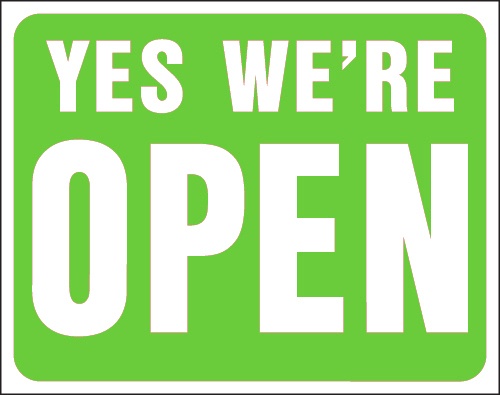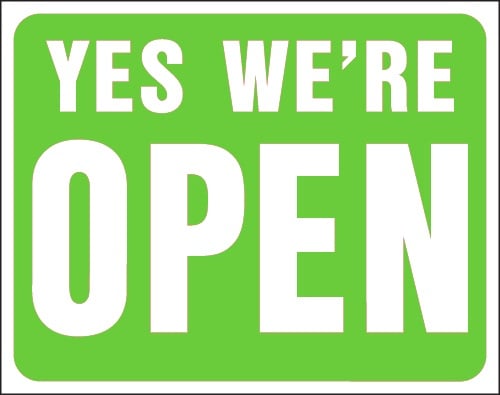Customer Communications Management Designed for Business Users
Business users want and need customer communications management (CCM) software that allows them to create and modify layouts and templates without help from IT, and without having to learn HTML5 or CSS3. And they want an intuitive, user-friendly visual interface.
However, as analyst Craig Le Clair points out in The Forrester Wave™: Customer Communications Management, Q2 2016, such a user-friendly design environment doesn’t exist among the 14 CCM vendors Forrester evaluated for this year’s report. It will, however, exist in our upcoming new CCM solution, INTOUCH®.
Topdown Philosophy
We’re developing the design environment for INTOUCH using a two-pillar philosophy to ensure that the design tools meet technological and line-of-business users’ needs.
Pillar 1: Openness
The new design studio is an open environment built using open source, open standards, and open content.
One key piece of open source used in the design studio is Twitter’s Bootstrap, which bills itself as, “the most popular HTML, CSS, and JS framework for developing responsive, mobile first projects on the web.” We’re using Bootstrap to build omni-channel layouts and templates.
Among the open standards we’re using are HTML5, CSS3 and JavaScript (or JS, as Twitter would say). When we deliver content for web and mobile channels, it’s in HTML5. We use CSS3 to define our stylesheets. And we use JavaScript for a number of things, including the underlying language of our business rules.
To maintain an open platform, we’re storing the content we generate in a repository (we’re using Apache Jackrabbit, another piece of open source) and providing APIs so that marketing automation tools, email service providers, and other digital experience applications and platforms can read and write content. We’re also storing our content in a channel-independent format to provide ultimate flexibility in how it’s used (more on that below).
This is really hard to do. (It must be since no other CCM platform does all of it!) So why did we do it? For two main reasons:
- Using open source/standards/platform makes the CCM software capable of being an equal citizen of the digital experience (DX) platform because content and data need to be shared across the entire platform for consistency of brand, message, voice, tone, etc.
- It increases usability for line-of-business users. CCM content creation and delivery today are still largely the realm of the technology nerd (someone who knows how to write Javascript and HTML by hand - not a typical business user). But there’s a requirement for business users to create content for customer communications. We should not need IT involvement for tasks that include creating layouts and templates – the foundational elements of CCM.
Other CCM tools act like they’re doing you a favor by letting business users edit things others have created. We say: Give them the keys!

Pillar 2: Multi/Omni-Channelness
We are also deeply cognizant of the importance of omni-channel delivery capabilities in modern customer experience (CX) management. Since many CCM vendors and users are rooted in a print-and-mail past, some tools in our space start with print documents and reverse-engineer them to digital. Others start with digital and then include print – that’s the category we fall into.
Since customers demand more and more e-delivery options each year, we have embraced a digital-first design philosophy. But since our clients in certain industries also still have to print and mail up to 70 percent of their customer communications, we’re making sure it’s just as easy and effective to adapt communications for print as well.
To do omni-channel communications well, each piece of content must be usable in templates intended for web, mobile, or print. Therefore, the content itself must be stored in a channel-independent format (we’re using JSON). And since most communications could be sent over more than one channel, you need to be able to easily create an entire set of templates for any given communication.
Example: An Insurance Identification Card
For example, think about an insurance ID card, one of most basic pieces of information that insurance companies provide to their customers. They used to send out cards in the mail days or even weeks after enrollment, and that was essentially the only way members could receive them. But ID cards today need to be distributable over multiple channels.
Lots of people still want a printed hard-copy card that they can put in their wallet, purse or car. But they also want an electronic version they can present on demand through a smartphone app, email, or other digital methods. But it’s not just about making a document “electronic”; it’s about optimizing the content for presentation via different devices, formats, and media.
There are elements you need on a printed and mailed sheet of paper that are not necessary on an electronic one. One example: An address block containing the recipient’s mailing address. The designer needs to be able to view every channel at the same time and ideally preview the communication with real data in real time to make sure the design works in different channels. That’s how multi-channel communications need to work today, and that’s exactly how we’re going to do it in INTOUCH.
Sneak Peek at INTOUCH Design Tools
We’ll be discussing this topic in a webinar with XPLOR on June 22, 2016. If you’re interested in learning more, register for the webinar today.







